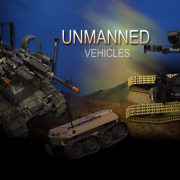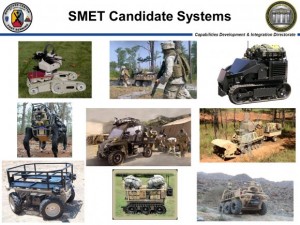Army to Test DSRC on Michigan’s I-69 in June
Burney Simpson
Michigan’s I-69 soon will become the first public highway to host a US Army test of the functionality of Dedicated Short Range Communications (DSRC) with connected vehicles.
The late June demonstration of four line-haul trailers on Interstate 69 will be conducted by the US Army’s Tank Automotive Research Development and Engineering Center (TARDEC) and the Michigan Department of Transportation (MDOT).
“The radio testing is a necessary step before any future testing of driver-optional features on the vehicle can be conducted,” according to an Army spokesperson.
Reports earlier this year said the vehicles would be outfitted with LiDAR, radar, sensors, and other driverless equipment. A test will be conducted of Vehicle to Infrastructure (V2I) and Vehicle to Vehicle (V2V) communications (See “Video-Army to Invade Michigan with Connected Trucks”).
DSRC is a medium- to short-range wireless communications capability that permits high-data transmission of communications-based safety information.
The Army and TARDEC have researched a variety of autonomous vehicle and robotic equipment applications (see “Army Robotics, Unmanned Tech on the March”). One recent concept is a ‘robotics vanguard’ that could be the first line of soldiers during an offensive maneuver.
In January, TARDEC demonstrated its Autonomous Mobility Appliqué System in Texas. The AMAS uses a programmable robotics kit, instead of a soldier, to drive a vehicle.
Michigan is in the midst of an aggressive push into autonomous vehicle research and development.
It is developing a 330-acre site that will be dedicated primarily to autonomous vehicle research and testing. The site is on the Willow Run ground where nearly 9,000 bombers were built during World War II, and near the 32-acre Mcity test bed that opened last year.
And Michigan state legislators are currently considering a series of bills that open up the state’s roads to driverless vehicles. One would allow cars to travel Michigan without a human driver in the vehicle, matching a law just enacted in Florida.
In May, Google announced it would open a driverless car development center in Novi, expanding its work into the Upper Midwest’s four-season climate.
“We’re the center of mobility and we’re not going to take that for granted,” MDOT Director Kirk Steudle told The Detroit News. “We’re going to continue to push that the way mobility gets framed in the future gets developed in Michigan.”
Steudle and TARDEC Director Dr. Paul Rogers are scheduled to speak at the June demonstration.
I-69 runs from Port Huron west to the state capitol of Lansing and south to Indiana.


 EQUIPMENT TRANSPORT
EQUIPMENT TRANSPORT